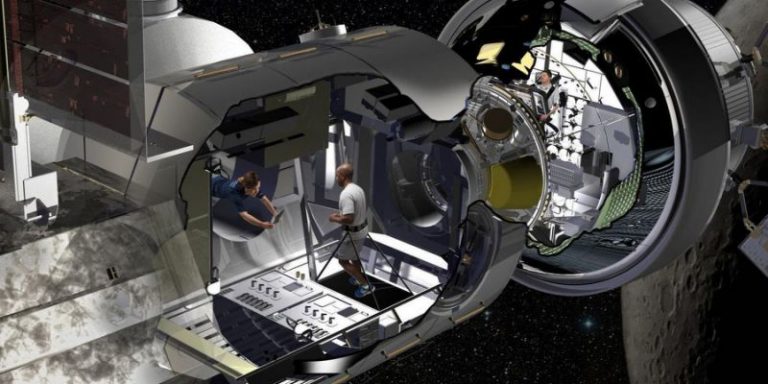NASA and its affiliated space contractors are set on sending humans to Mars, and while a crewed mission to the Red Planet is likely a few decades out at least, we are starting to get a sense of what the vehicles to make the long trip could look like. Lockheed Martin, one of six contractors NASA has approached to provide transportation to Mars, recently revealed a concept of a large spacecraft equipped with habitats and amenities to support human’s all the way to the fourth planet.
Lockheed Martin has been working to send astronauts to Mars for a while now, and last year they unveiled a concept for a space station to be placed in orbit around the planet. This new spacecraft concept, presented at the Kennedy Space Center last week, features a design to allow the astronauts to reach Mars in the first place.
The design is based off an old transport-the Donatello Multi-Purpose Logistics Module-that Lockheed originally developed to send cargo to the International Space Station. Donatello was never used for that purpose, but the company’s engineers have repurposed it as a transport vessel to Mars.

The capsule measures about 15 feet wide by 22 feet long, about the same dimensions as a small bus or RV, and its designers say it has more in common with an RV than just its size. “You think of it as an RV in deep space,” said Lockheed’s program manager Bill Pratt during the presentation, as reported by the Orlando Sentinel. “When you’re in an RV, your table becomes your bed and things are always moving around, so you have to be really efficient with the space. That’s a lot of what we are testing here.”
That multipurpose RV design comes in handy in such a small space, as Lockheed’s capsule manages to fit in sleep stations, exercise stations, and work stations for the crew, as well as life support systems and scientific instruments.
The plan is for the astronauts to be carried to the capsule aboard NASA’s upcoming Orion crew module and rendezvous at the Deep Space Gateway, a planned space station in orbit around the moon. However, neither of these NASA projects are likely to be operational until the 2020s at the earliest, and the Deep Space Gateway might not be up and running until 2030. It will almost certainly be a long time before any astronauts end up hitching a ride on this space RV.
Source: Orlando Sentinel
Ask me anything
Explore related questions





